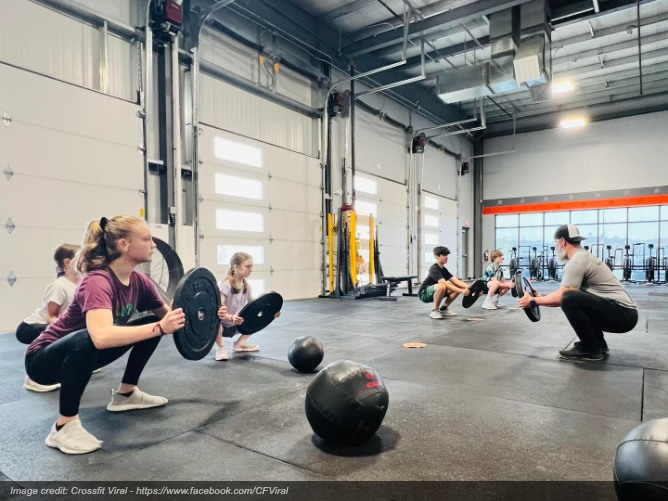Intermittent fasting has become a popular trend in the health and wellness world, with many people claiming it has helped them lose weight, improve their overall health, and increase their energy levels. But what exactly is intermittent fasting, and how can you start incorporating it into your lifestyle? In this article, we will explore the basics of intermittent fasting, its benefits, and how to get started. We will also delve into the different methods of intermittent fasting, providing a comprehensive guide for those who are new to this health trend.
What is Intermittent Fasting?

Intermittent fasting is a pattern of eating that involves alternating periods of fasting and eating. Unlike traditional diets that focus on what you eat, intermittent fasting focuses on when you eat. There are several different methods of intermittent fasting, but the most common ones are the 16/8 method, the 5:2 method, and the alternate-day fasting method. Each of these methods has its own unique benefits and challenges, and the best one for you will depend on your individual health goals and lifestyle.
The 16/8 Method
The 16/8 method involves fasting for 16 hours and then eating during an 8-hour window. This method is also known as the “Leangains” protocol and is popular among those who want to lose weight and improve their overall health. During the 16-hour fasting period, you can only consume water, black coffee, or other non-caloric beverages. Then, during the 8-hour eating window, you can eat two to three meals. This method is particularly beneficial for those who are new to intermittent fasting, as it is relatively easy to follow and can be adjusted to fit your daily routine.
The 16/8 method is also flexible in terms of when you choose to fast. For example, you could choose to fast from 8 pm to 12 pm the next day, allowing you to skip breakfast but still have lunch and dinner. Alternatively, you could choose to fast from 2 pm to 6 am, skipping dinner but still having breakfast and lunch. The key is to find a fasting window that works best for your lifestyle and dietary needs.
The 5:2 Method
The 5:2 method involves eating normally for five days of the week and then restricting your calorie intake to 500-600 calories for two non-consecutive days. This method is also known as the “Fast Diet” and is popular among those who want to lose weight and improve their insulin sensitivity. The 5:2 method is a form of periodic fasting, which means that you only fast on certain days of the week. This can make it easier to stick to the diet, as you only need to restrict your calorie intake for two days out of seven.
On your fasting days, it’s important to focus on consuming nutrient-dense foods that will keep you feeling full and satisfied. This could include lean proteins, fruits and vegetables, and whole grains. On your non-fasting days, you can eat normally, but it’s still important to maintain a balanced diet to ensure you’re getting all the nutrients your body needs.
Alternate-Day Fasting
As the name suggests, alternate-day fasting involves fasting every other day. On fasting days, you can consume 500-600 calories, while on non-fasting days, you can eat normally. This method is more challenging than the others and is not recommended for beginners. However, for those who are able to stick to it, alternate-day fasting can offer significant health benefits, including weight loss, improved insulin sensitivity, and reduced inflammation.
Alternate-day fasting requires a high level of discipline and commitment, as it involves significantly reducing your calorie intake every other day. However, it’s important to remember that on your fasting days, you’re not completely abstaining from food. You’re still allowed to consume a small amount of calories, which can help to curb hunger pangs and keep your energy levels stable.
Benefits of Intermittent Fasting

Intermittent fasting has gained popularity due to its numerous health benefits. Here are some of the most significant benefits of intermittent fasting:
- Weight Loss: Intermittent fasting can help you lose weight by reducing your calorie intake and increasing your metabolism. It also helps your body burn fat for energy instead of glucose, leading to weight loss. This is because during fasting periods, your body is forced to tap into its fat stores for energy, leading to weight loss over time.
- Improved Insulin Sensitivity: Intermittent fasting can improve your body’s response to insulin, which is essential for regulating blood sugar levels. This can help prevent type 2 diabetes and other metabolic disorders. By improving insulin sensitivity, intermittent fasting can help to regulate blood sugar levels and prevent spikes and crashes that can lead to feelings of hunger and fatigue.
- Increased Energy Levels: Many people who practice intermittent fasting report feeling more energized and focused. This is because fasting can increase the production of human growth hormone, which helps with fat burning and muscle growth. Additionally, by stabilizing blood sugar levels, intermittent fasting can help to prevent energy crashes and keep you feeling energized throughout the day.
- Reduced Inflammation: Studies have shown that intermittent fasting can reduce inflammation in the body, which is linked to various chronic diseases such as heart disease, cancer, and Alzheimer’s. By reducing inflammation, intermittent fasting can help to improve overall health and prevent chronic disease.
- Longevity: Some studies suggest that intermittent fasting can increase lifespan and slow down the aging process. This is because fasting triggers cellular repair processes and increases the production of antioxidants. By promoting cellular repair and reducing oxidative stress, intermittent fasting can help to slow down the aging process and promote longevity.
- There are many diet apps and weight loss apps to help with your fasting.
How to Start Intermittent Fasting

Now that you know the basics of intermittent fasting and its benefits, you may be wondering how to get started. Here are some steps to help you begin your intermittent fasting journey:
- Choose a Method: The first step is to choose the intermittent fasting method that best suits your lifestyle and goals. If you are new to fasting, it is recommended to start with the 16/8 method and gradually work your way up to more challenging methods. Consider your daily routine, your dietary needs, and your health goals when choosing a method.
- Calculate Your Fasting Window: Once you have chosen a method, you need to determine your fasting window. For the 16/8 method, this would mean choosing an 8-hour window during which you will eat your meals. For the 5:2 method, you need to decide which two days of the week you will restrict your calorie intake. It’s important to choose a fasting window that fits with your lifestyle and won’t cause too much disruption to your daily routine.
- Stay Hydrated: During your fasting period, it is essential to stay hydrated by drinking plenty of water. This will help you feel full and prevent dehydration. You can also drink other non-caloric beverages, such as herbal tea or black coffee, to help curb hunger pangs during your fasting window.
- Listen to Your Body: It is crucial to listen to your body and adjust your fasting window accordingly. If you feel weak or lightheaded, it may be a sign that you need to shorten your fasting period or increase your calorie intake during your eating window. Remember, the goal of intermittent fasting is to improve your health, not to push your body to its limits.
- Be Patient: It may take some time for your body to adjust to intermittent fasting, so be patient and give yourself time to adapt. It is also essential to consult with your doctor before starting any new diet or fasting regimen, especially if you have any underlying health conditions. Remember, intermittent fasting is a lifestyle change, not a quick fix, so it’s important to be patient and consistent.
Intermittent Fasting for Women Over 50

Intermittent fasting can be beneficial for women over 50, as it can help with weight loss, improve insulin sensitivity, and reduce inflammation. However, women over 50 may need to make some adjustments to their fasting routine to accommodate their changing bodies. Here are some tips for women over 50 who want to try intermittent fasting:
- Start Slowly: As we age, our bodies become less efficient at processing food, so it is essential to start slowly and gradually increase your fasting window. This will give your body time to adjust and prevent any adverse effects. You might want to start with a shorter fasting window, such as 12 hours, and gradually increase it as your body adjusts.
- Stay Hydrated: As we get older, our sense of thirst decreases, so it is crucial to stay hydrated during your fasting period. Make sure to drink plenty of water and other non-caloric beverages. This will not only help to prevent dehydration, but it can also help to curb hunger pangs during your fasting window.
- Consider Your Medications: If you are taking any medications, it is essential to consult with your doctor before starting intermittent fasting. Some medications may need to be taken with food, so you may need to adjust your fasting window accordingly. It’s also important to monitor your health closely and to stop fasting if you experience any adverse effects.
Using an Intermittent Fasting Calculator
If you are new to intermittent fasting, you may find it helpful to use an intermittent fasting calculator to determine your fasting window. These calculators take into account your age, weight, and activity level to provide you with a personalized fasting schedule. Some popular intermittent fasting calculators include the Zero app, the BodyFast app, and the FastHabit app. These tools can be a great way to get started with intermittent fasting, as they can help to take the guesswork out of determining your fasting window.
In addition to helping you determine your fasting window, these calculators can also provide you with other useful information, such as how many calories you should consume during your eating window, and how much water you should drink during your fasting period. They can also provide you with tips and advice on how to make intermittent fasting a sustainable part of your lifestyle.
Conclusion

Intermittent fasting is a powerful tool for weight loss, improved health, and increased longevity. By choosing the right method, staying hydrated, and listening to your body, you can successfully incorporate intermittent fasting into your lifestyle. Remember to consult with your doctor before starting any new diet or fasting regimen, and be patient as your body adjusts. With consistency and dedication, you can unlock the power of intermittent fasting and reap its many benefits. Whether you’re looking to lose weight, improve your health, or simply challenge yourself, intermittent fasting can be a great way to achieve your goals.




